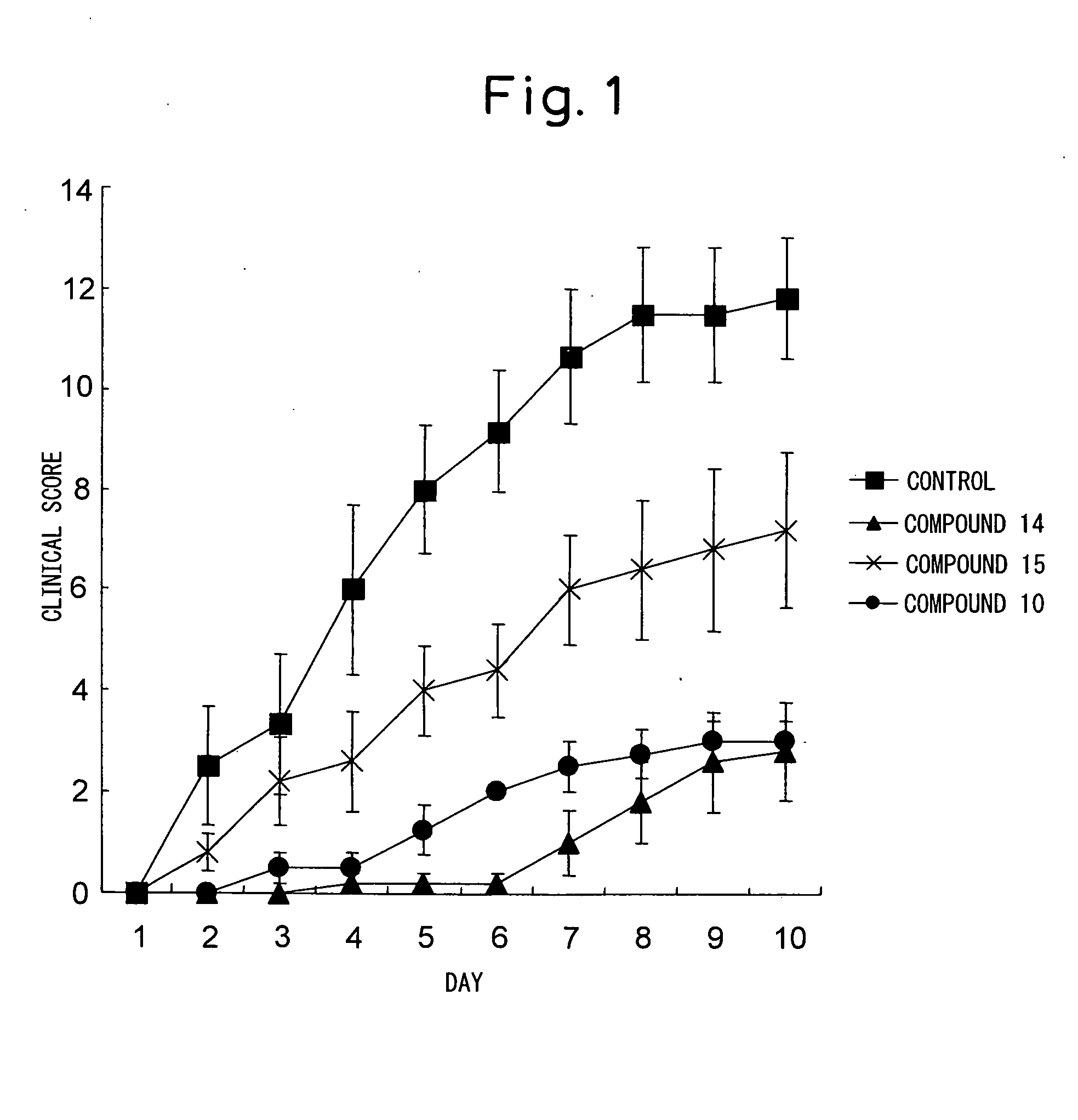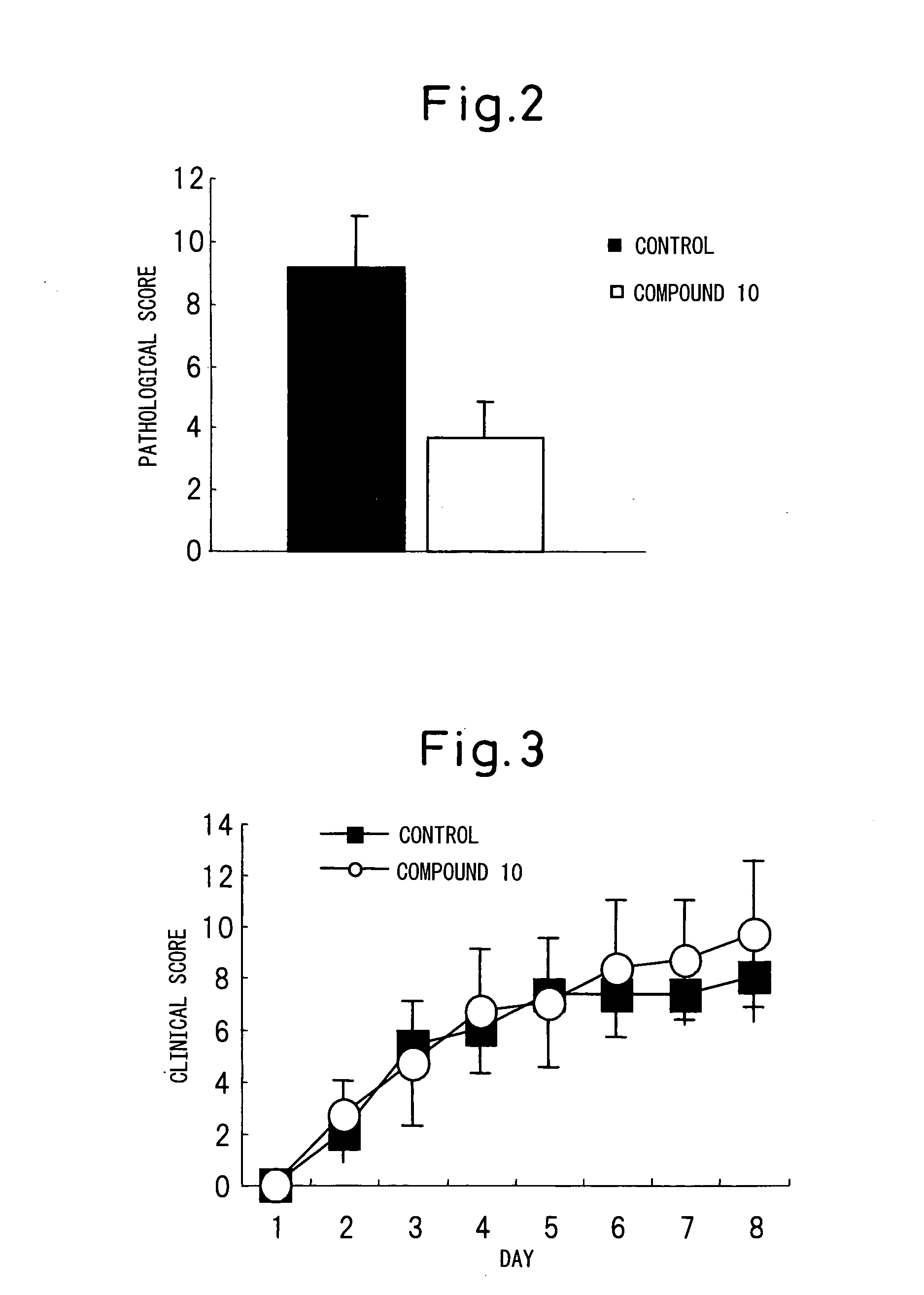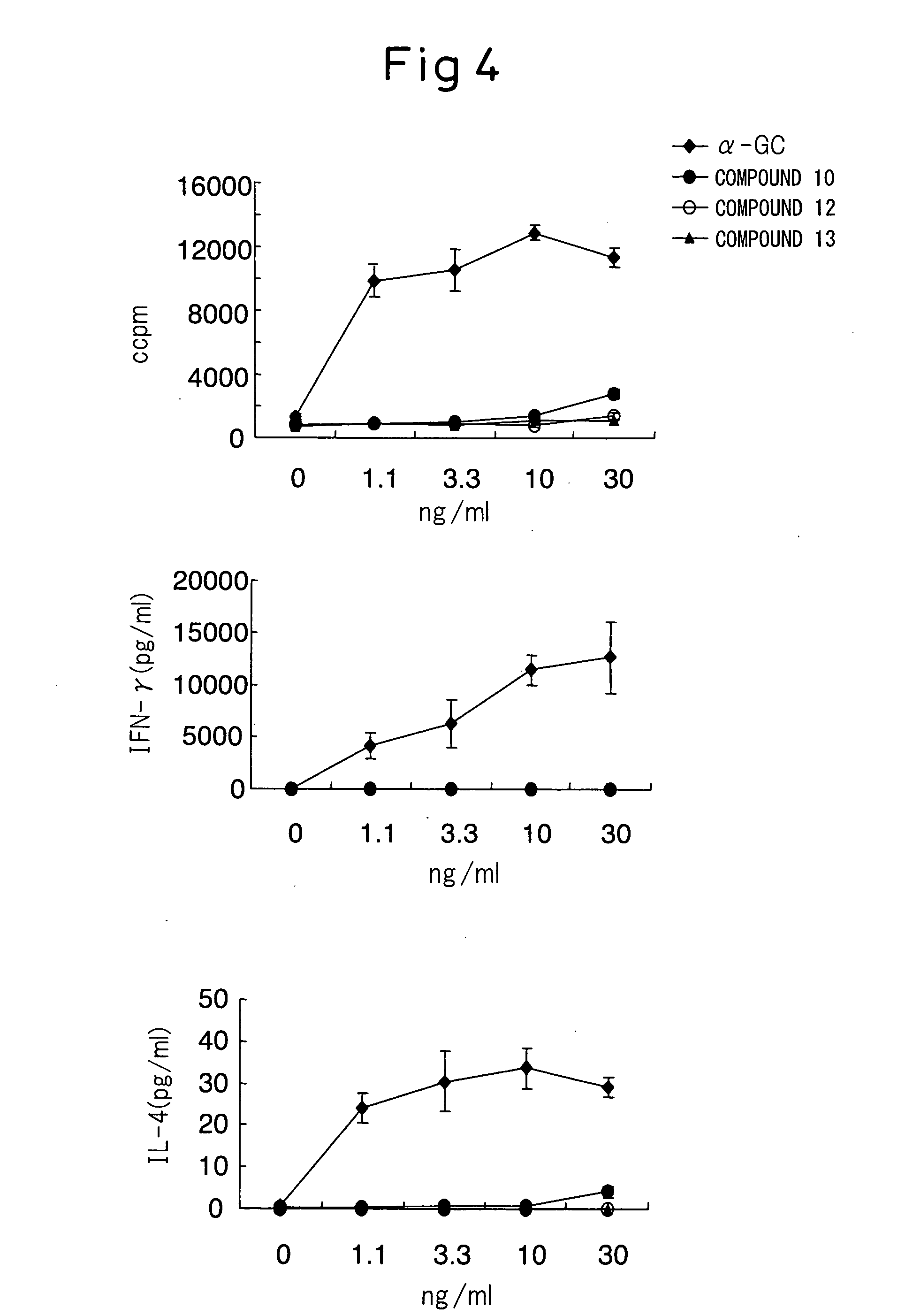Glycolipid Derivative and Drug Containing the Same as Active Component
a glycolipid and active component technology, applied in the field of glycolipid derivatives, can solve the problems of difficult clinical application, many side effects of treatment methods, and increased deterioration, and achieve the effects of strong suppressive effect of antibody-induced arthritis, slight production, and slight proliferation of nkt cells
- Summary
- Abstract
- Description
- Claims
- Application Information
AI Technical Summary
Benefits of technology
Problems solved by technology
Method used
Image
Examples
example 1
Synthesis of 1,3-O-benzylidene-D-arabino-1,2,3,4-tricosanetetraol (Compound 1)
[0126]To a suspension of copper (II) iodide (2.14 g, 11.2 mmol) in dehydrated tetrahydrofuran (50 ml), 1.58M n-octadecyl magnesium bromide (49.5 mmol in tetrahydrofuran solution) was added dropwise at −40° C., then the mixture was stirred at −10° C. for 10 minutes. Next, a dehydrated tetrahydrofuran (100 ml) solution of known 4,5-anhydro-1,3-O-benzylidene-D-arabitol (WO2004 / 072091; K. Murata et al., J. Org. Chem. 2005, 70, 2398) (5.01 g, 22.5 mmol) was added dropwise at −10° C., then the mixture was stirred at −10° C. for 2.5 hours. To the reaction mixed solution, an aqueous saturated ammonium chloride solution was added, the product was extracted with ethyl acetate, the organic layer was washed with saturated saline, and the resultant mixture was dried over sodium sulfate, filtered, and concentrated in vacuo. The residue obtained was purified by silica gel column chromatography (chloroform:ethyl acetate=1...
example 2
Synthesis of 1,3-O-benzylidene-2-O-methane sulfonyl-D-arabino-1,2,3,4-tricosanetetraol (Compound 2)
[0127]To a solution of the compound 1 synthesized in Example 1 (1.64 g, 3.44 mmol) in dehydrated pyridine (30 ml) and chloroform (30 ml), methanesulfonyl chloride (0.84 ml) was added dropwise at room temperature, then the reaction mixture was stirred at room temperature for 2 days through the night. The reaction mixture was concentrated, then heptane was used to azeotropically remove the solvent (twice), then the residue obtained was dissolved in chloroform (300 ml) and washed with water (twice). The organic layer was obtained, then dried over sodium sulfate, filtered, and concentrated in vacuo. The residue obtained was purified by silica gel column chromatography (chloroform:ethyl acetate=2:1) to obtain the above-identified compound in an amount of 1.00 g (yield 53%).
example 3
Synthesis of 2-O-methane sulfonyl-D-ribo-1,3,4-tricosanetriol (Compound 3)
[0128]To a solution of Compound 2 synthesized in Example 2 (555 mg, 1.00 mmol) in ethanol (50 ml) and chloroform (25 ml), 20% Pd(OH)2 / C (198 mg) was added, then the mixture was stirred under a hydrogen atmosphere at room temperature overnight. The catalyst was filtered off by serite, then the filtrate was concentrated in vacuo to obtain the above-identified compound in an amount of 445 mg (yield 95%).
PUM
| Property | Measurement | Unit |
|---|---|---|
| temperature | aaaaa | aaaaa |
| temperature | aaaaa | aaaaa |
| temperature | aaaaa | aaaaa |
Abstract
Description
Claims
Application Information
 Login to View More
Login to View More - R&D
- Intellectual Property
- Life Sciences
- Materials
- Tech Scout
- Unparalleled Data Quality
- Higher Quality Content
- 60% Fewer Hallucinations
Browse by: Latest US Patents, China's latest patents, Technical Efficacy Thesaurus, Application Domain, Technology Topic, Popular Technical Reports.
© 2025 PatSnap. All rights reserved.Legal|Privacy policy|Modern Slavery Act Transparency Statement|Sitemap|About US| Contact US: help@patsnap.com



